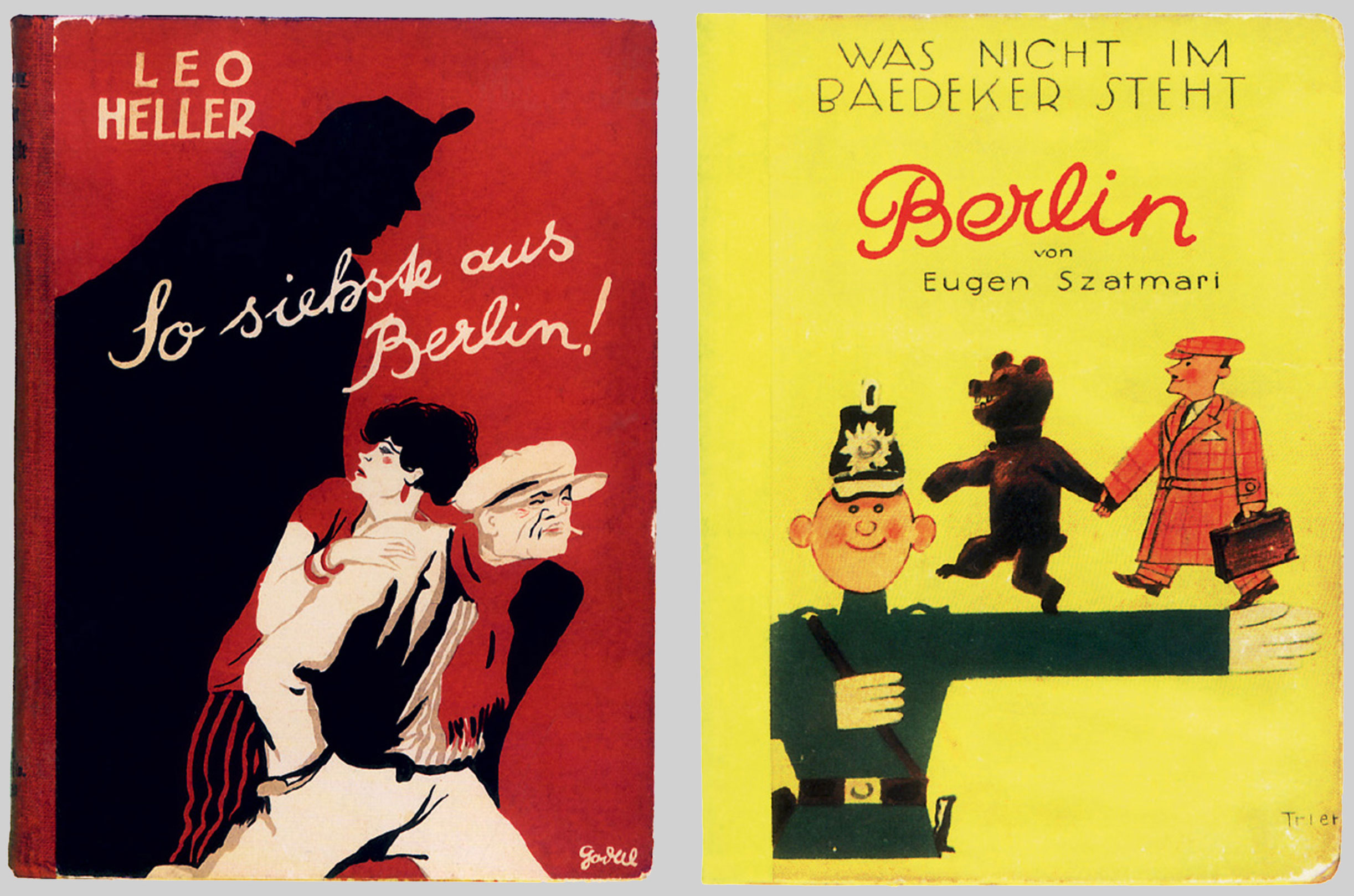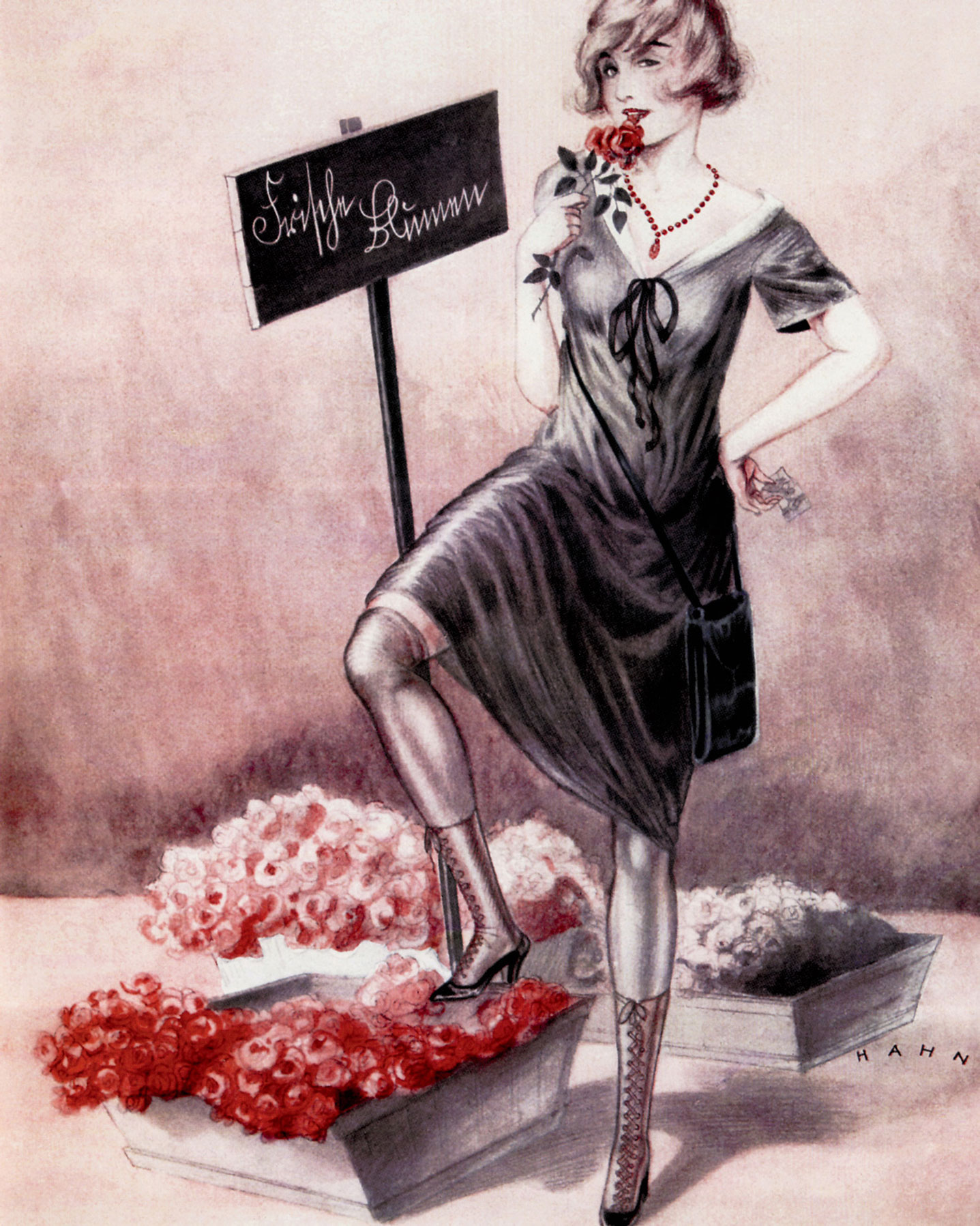Inventory / Everyone Once in Berlin!
A semiotics of the Weimar streetwalker
Mel Gordon
“Inventory” is a column that examines or presents a list, catalogue, or register.
Between 1919 and 1933, Berlin was one of the Jazz Age’s primary destinations for sex tourists. Its civic leaders even promoted this unsavory attraction in 1927 with the oblique and comic proclamation, “Everyone Once in Berlin!” Nocturnal erotic delights, in fact, had become the metropolis’s third most lucrative industry.
The very first thing foreigners noticed in Berlin was its thousands of prostitutes, on the streets, in hotel lobbies, and seated at cafés and clubs. How many women made their living selling sex in Berlin during the Golden Twenties is impossible to calculate, but estimates range from a low of 5,000 to the oft-published figure of 120,000 (not including the city’s estimated 35,000 male prostitutes). It all depended on one’s definition of the term.

Commercialized sex in the Prussian capital was technically unlawful but allowed in practice. Only two strictures were consistent: unlike Paris, Buenos Aires, or Shanghai, Berlin had no established red-light district or legalized brothels, and prostitutes were prohibited from verbally soliciting customers or announcing their services in print. Instead, they had to signal their vocation and specialized activities by other means: through frequenting specific locales, using the subterfuge of evocative pseudonyms, or adopting particular codes of dress.
Altogether there were seventeen distinct varieties of female prostitutes in Weimar Berlin. Although relatively few in number (300 to 350), Boot Girls, dominatrices near the Wittenberg Platz, provided Berlin nightlife with its most ubiquitous local color. Since the fur-coated Boot Girls’ particular services were suggested by the iridescent colors of their calf-length, patent-leather boots and shoelaces, suitors had to be intimately familiar with their semaphore-like advertising before accompanying them to nearby apartments. Naturally, only devoted aficionados could decipher such specific messages with confidence. Other potential clients had to buy special primers, where Berlin’s complex street semiotics were thoughtfully decoded for the uninitiated.
Arriving in Berlin during the inflation crisis of 1922–1923, Klaus Mann remembered walking past a group of the outdoor dominatrices: “Some of them looked like fierce Amazons, strutting in high boots made of green, glossy leather. One of them brandished a supple cane and leered at me as I passed by. ‘Good evening, Madam,’ I said. She whispered into my ear, ‘Want to be my slave? Costs only six billion and a cigarette. A bargain. Come along, honey!’” Eight years after Mann’s encounter, Curt Moreck reported on the same corner: “One favorite tourist site is located near the corner of Passauer and Ansbacher streets, west of Wittenberg Platz. There, a trio of six-foot-tall Boot Girls are garishly costumed in red and black attire like nineteenth-century horsewomen. Snapping a riding crop, the tallest Amazon bellows menacingly, ‘Who will be my slave tonight?’”
The following is an inventory of the services offered by the various types of prostitutes working indoors and outdoors in Weimar Berlin.

Demi-Castors Young women from good families who occasionally supplemented their allowances by working in high-class houses in west Berlin.
Dominas Leather-clad women who specialized in whipping, humiliation, and other forms of punishment, and worked in lesbian nightclubs that admitted heterosexual couples and free-spending male clients.
Fohses Independent prostitutes who advertised in newspapers and magazines as manicurists or masseuses.
Medicine girls Child prostitutes who were “prescribed” by pimps posing as physicians in phony pharmacies in west Berlin.
Minettes Exclusive call girls who enacted S&M fantasy scenes involving foot worship and forced transvestitism.
Race Horses Masochistic prostitutes who worked in “Institutes for Foreign Language Instruction” where the schoolrooms were equipped with bondage equipment.
Table Ladies Prostitutes who worked at expensive nightclubs often frequented by politicians and businessmen who paid “table money” for an evening of champagne and conversation prior to a backroom encounter.
Telephone Girls Child prostitutes, aged twelve to seventeen, who were made to resemble junior versions of theater or film starlets and were ordered by telephone.
—Black boots: buttocks cropping (lying on bed).
—Brown boots: asphyxiation by boot or stockinged foot.
—Cobalt blue boots: forced feminization; penetration by female.
—Lacquered gold boots: bound feminization; physical torture.
—Poisonous green boots: psychological enslavement.
—Brick red boots: buttocks flagellation (tied to bed or cross).
—Scarlet boots: forced feminization; transvestite humiliation.
—Black laces: punishment with a short whip.
—Gold laces: defecation on chest.
—Maroon laces: verbal humiliation.
—White laces: collared like a dog.
—White ribbons on top of boots: a roleplay scenario in which the male customer begins as the dominant figure and ends as the submissive party.
Grasshoppers Lowly streetwalkers who performed oral sex in the Tiergarten.
Gravelstones Physically deformed women who worked in north Berlin.
Half-Silks Occasional prostitutes, often secretaries, shopkeepers, and office clerks supplementing their incomes after work.
Kontroll Girls Three defined classes of licensed prostitutes, whose health was certified by city physicians.
Münzis Pregnant women who waited under lampposts on Münzstrasse.
Nuttes Boyish teenage girls who framed their transactions with the protocols of dating, enticing their customers with lines such as, “Don’t you think we should have a coffee first?”
Tauentzien Girls Women wearing the latest fashions and hairstyles, often working in mother-and-daughter teams near the Kaiser Memorial Church.
Mel Gordon is professor of theater arts at the University of California, Berkeley. He is the author of numerous books, including Voluptuous Panic: the Erotic World of Weimar Berlin (Expanded Edition) (Feral House, 2006) and The Seven Addictions and Five Professions of Anita Berber (Feral House, 2006). His next book, The Artificial Paradise: Erotic Paris, 1920–1946, will be published by Feral House in 2009.